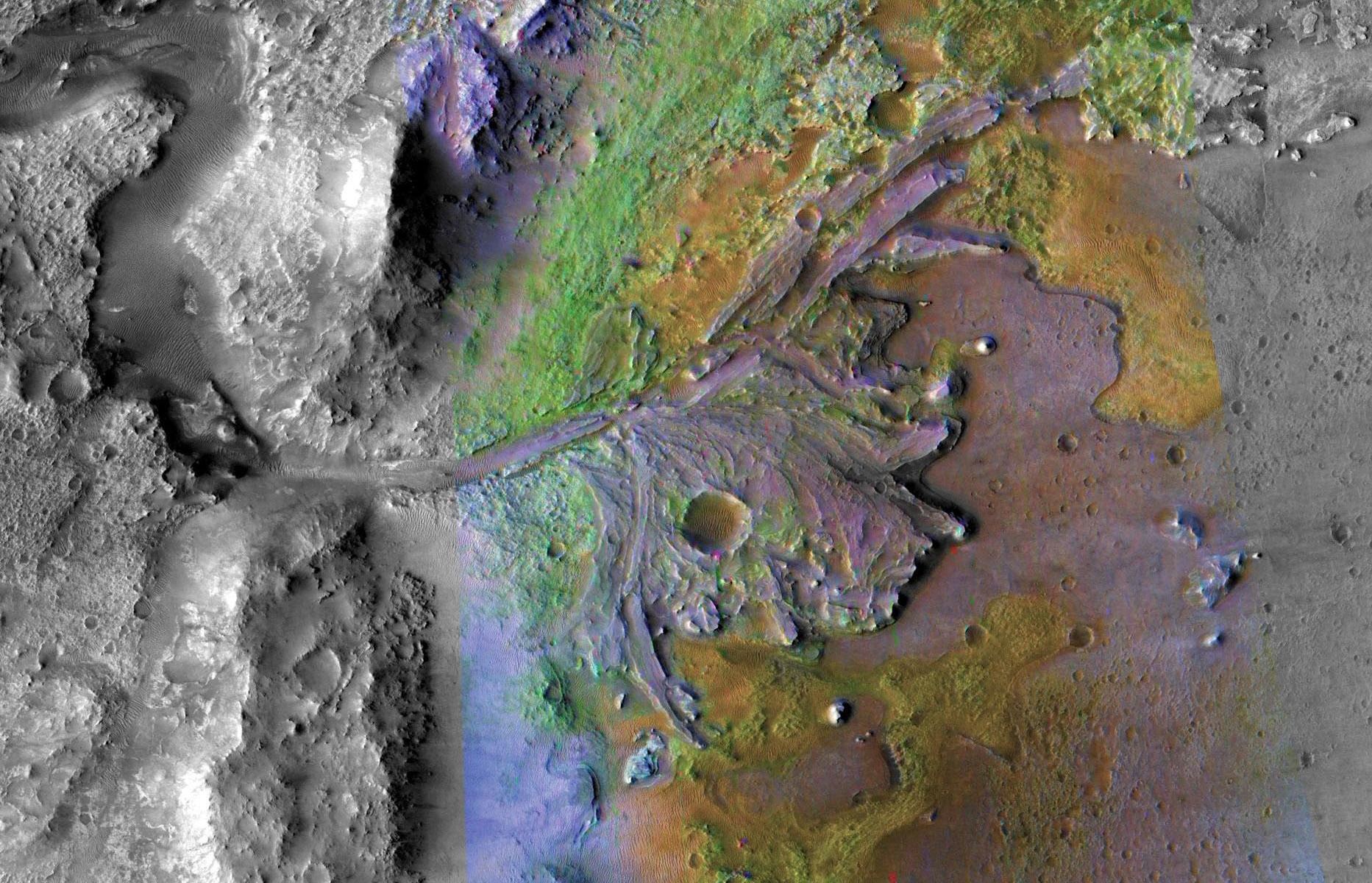On Mars, NASA’s Perseverance rover is busy collecting rock samples that will be retrieved and brought back to Earth by the Mars Sample Return (MSR) mission. This will be the first sample-return mission from Mars, allowing scientists to analyze Martian rocks directly using instruments and equipment too large and cumbersome to send to Mars. To this end, scientists want to ensure that Perseverance collects samples that satisfy two major science goals – searching for signs of life (“biosignatures”) and geologic dating.
To ensure they select the right samples, scientists must understand how rock samples formed and how they might have been altered over time. According to a new NASA study, Martian rocks may have been “shocked” by meteorite impacts during its early history (the Late Heavy Bombardment period). The role these shocks played in shaping Martian rocks could provide fresh insights into the planet’s geological history, which could prove invaluable in the search for evidence of past life on Mars.
The study was led by Dr. Svetlana Shkolyar, a planetary scientist at NASA’s Goddard Space Flight Center and the Blue Marble Space Institute of Science (BMSIS). She was joined by researchers from the American Museum of Natural History (AMNH), the John Hopkins University Applied Physics Laboratory (JHUAPL), the Institut de Minéralogie, de Physique des Matériaux et de Cosmochimie (IMPMC), the University of the Basque Country, the Los Alamos National Laboratory, the Niels Bohr Institute, NASA Goddard, and the NASA Jet Propulsion Lab.

Their study, published in the journal Earth, Moon, and Planets, described how samples of Martian feldspar collected by Perseverance could be characterized by its SuperCam and Scanning Habitable Environments with Raman & Luminescence for Organics & Chemicals (SHERLOC) instruments. As Shkolyar explained in a recent NASA press release:
“Because we’re counting on these samples to reveal a record of Mars’ geologic past, it would be important for us to understand if and how the rocks have been altered. The heat and pressure of an impact event can cause the rocks affected by it to melt. This means that when we study these rocks today, millions or even billions of years after the impacts occurred, the rocks could have had their original characteristics altered. It could even make one type of rock look like a different type of rock altogether.”
Shkolyar and her team focused on a type of rock mineral common to Earth and Mars: plagioclase feldspar. Feldspar refers to a group of rock-forming aluminum minerals containing positively-charged elements (sodium, calcium, potassium, or barium) and making up about 75% of Earth’s crust. Plagioclase minerals are the most common members of this group and are produced during the weathering of igneous and metamorphic rocks. Their study details how impact shocks can be identified in plagioclase and how improved instrumental methods can characterize the chemistry of rocks.
According to Shkolyar, this will come in handy when the cache of samples is returned to Earth. The study of impact-shocked samples could help scientists more precisely define when the Late Heavy Bombardment occurred and how long it lasted. This period occurred during the early Solar System (between 4.1 to 3.8 billion years ago) when the planets were in less-stable orbits and subjected to frequent asteroid impacts. These impacts are believed to have played a vital role in the distribution of water throughout the Solar System (and the building blocks of life).
Shkolyar and her team emphasize that there are important considerations when selecting samples. This included documenting the environmental context of samples before they are collected and cached. Said Shkolyar:
“For both astrobiology and dating the age of the rocks, the effect of impact shock is very important to consider. When looking for fossil carbon in these rocks, which could be an indicator of past life, the alterations imposed by impact shock could alter the carbon signature. An example of how shocked samples could be beneficial would be to help us understand the history of impact on Mars. Impact-shocked samples would contain geologic indicators which would help us to constrain the duration of the Heavy Bombardment more accurately.”
The Sample Return Mission is a cooperative program between NASA and the European Space Agency (ESA). This mission will consist of four major elements that will commence launching in 2026, starting with a Sample Retrieval Lander (provided by NASA) that will touch down on the surface. Perseverance will deliver the samples to the lander with the assistance of two Sample Recovery Helicopters (NASA) similar to Ingenuity. The Mars Ascent Vehicle (NASA) will launch the samples into orbit, where they’ll be retrieved by the ESA’s Earth Return Orbiter and transported back to Earth.
This will allow for studies that are far more detailed than any performed previously by robotic missions. The results will help scientists gain a better understanding of Mars’s past and subsequent evolution, especially where the possible existence of life is concerned. By dating rocks and inferring the chronology of Mars, scientists can determine how long Mars had habitable conditions on its surface. With any luck, the analysis will also show indications of past life and maybe even point to where we might find it today.
Further Reading: NASA

